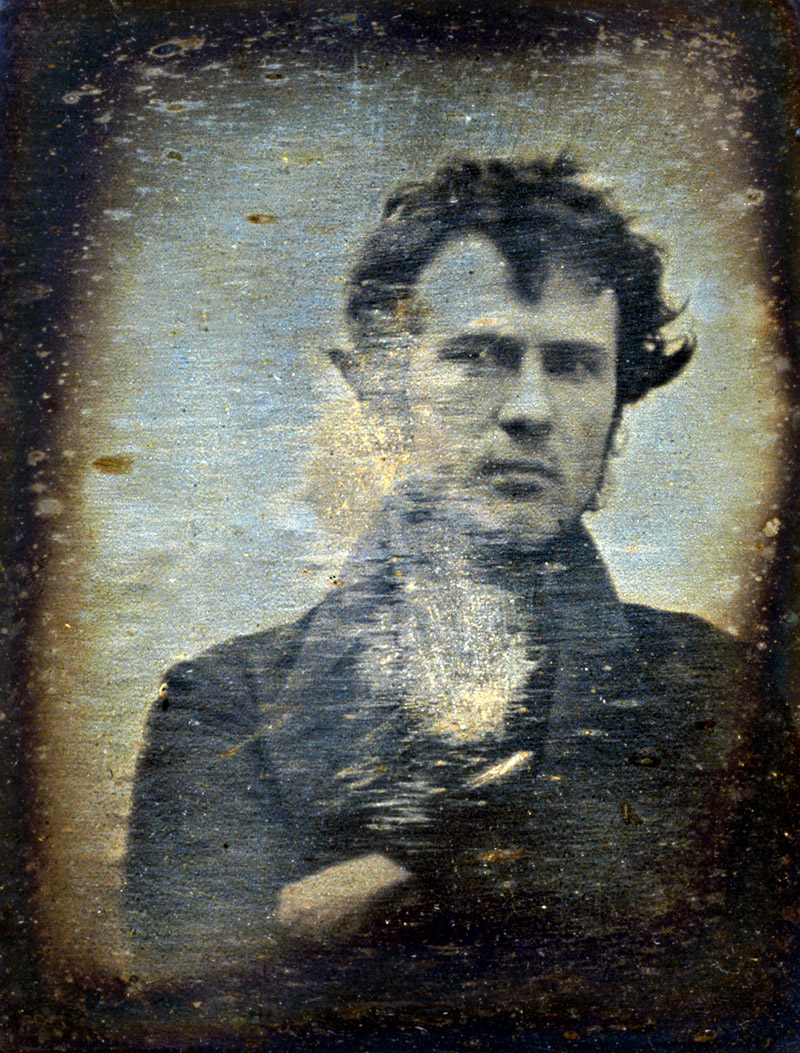
[HOME] [ISSUE] [ARCHIVES] [ABOUT] [GUIDELINES] [BLOG] Robert Cornelius speaks a dead tongueby J. C. Runolfson It's an old language,
It's an old language,the shape of cheek and jaw the line of the brow. The play of light and shadow over the features of a man. It's been written before, on wood and stone, in clay and metal, with ink and paint, charcoal and chalk, the scratch of stick and stylus. What's new is the machine, the artist's mirror automated, a lens behind which waits a form of mixed metal he has yet to master. He must prove his medium with stillness while the light grows, the shadows change, the scientist's methodology applied to art. This is alchemy, the transmutation of metal into the image of man, the capture of this light in this place, but it is only the first stage, dissolute. He has posed himself as though to declare I am here, but in this strange dialect he is not so certain. The image peering up from the exposed plate is perplexed, questioning. Am I, it asks. What am I? It would take him years to know the answer- the shape of things come and gone- and how to speak it. Once he understood, he returned to baser tongues, uninterested in learning to pronounce death. He might have predicted the coming trend, the vogue of corpses as ideal linguists, their stillness perfect tablets on which to write the moment as it passed. We were here, in this light, in this shadow. They draw the shape of us as we were come and gone. J. C. Runolfson's Rhysling-nominated work has appeared in Goblin Fruit, Mythic Delirium, and Strange Horizons, among others. This is the second of two poems that have thus far resulted from her interest in the influence of early photography on American folklore. She is relocating from Southern California to Florida at the whim of the U.S. Navy. 
|